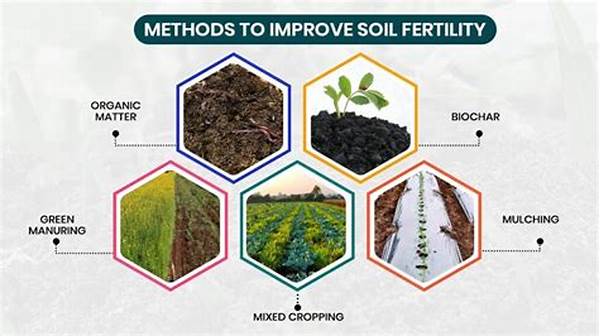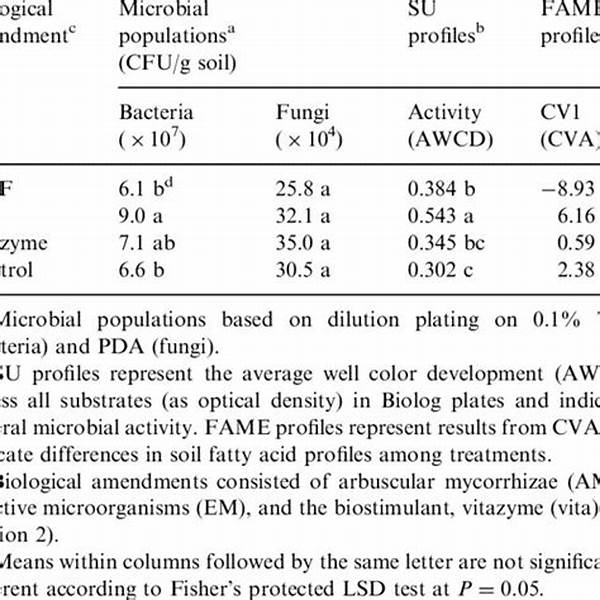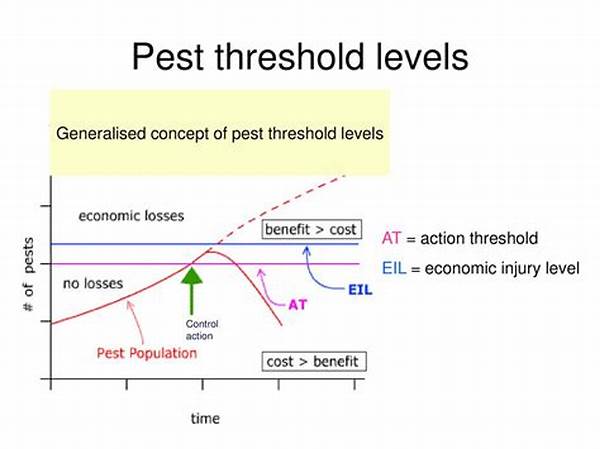Soil fertility is the cornerstone of successful and sustainable agriculture, yet it is often underestimated and overlooked. Imagine a world where every seed sown matures into a bountiful harvest because the soil it grew in was rich in nutrients and vitality. This is not just a dream but an achievable reality through implementing long-term soil fertility strategies. The importance of nourishing our soil for the future cannot be overstated. It’s time to shift our focus from short-term gains to sustainable practices that secure the fertility of our soil for generations to come. Let’s explore how these strategies are not just beneficial but imperative for our environment, economy, and food security.
Read Now : Nutritional Benefits Of Organic Crops
The Importance of Sustainable Practices in Soil Fertility
When discussing long-term soil fertility strategies, the first step is recognizing the importance of sustainable agricultural practices. Conventional farming methods often deplete the soil of its essential nutrients, leading to reduced productivity over time. In contrast, sustainable practices like crop rotation, cover cropping, and organic amendments not only maintain but enhance soil fertility. By adopting these strategies, farmers can ensure that the soil remains productive and healthy for future generations.
Furthermore, implementing long-term soil fertility strategies is essential for environmental conservation. Healthy soil plays a crucial role in carbon sequestration, water retention, and biodiversity. As such, preserving soil fertility directly contributes to combating climate change and protecting ecosystems. By making sustainable practices a priority, we can create a planet where agriculture harmonizes with nature rather than depleting it.
Finally, long-term soil fertility strategies are economically advantageous. While initial implementation may require investment in knowledge or materials, the payoff is substantial. Healthier soils result in higher yields, reduced need for chemical inputs, and increased resilience against pests and diseases. The economic benefits extend beyond the farm, boosting the agricultural sector and local economies as a whole. It’s clear that the path to sustainable prosperity lies within our soil.
Five Key Strategies for Long-term Soil Fertility
1. Crop Rotation: Enhance nutrient availability and break pest cycles by alternating different crops over successive seasons, a cornerstone of long-term soil fertility strategies that also improves soil structure.
2. Cover Cropping: Utilize living plants to cover the soil, preventing erosion and adding organic matter. This essential strategy boosts soil health while enhancing biodiversity within the ecosystem.
3. Composting: Transform organic waste into nutrient-rich compost, enriching the soil and reducing reliance on synthetic fertilizers. It’s a cost-effective and eco-friendly method for long-term soil fertility.
4. Reduced Tillage: Minimize soil disturbance to protect its structure and microbial life, leading to increased fertility and moisture retention over time, a crucial part of sustainable agriculture.
5. Agroforestry: Integrate trees and shrubs into farming systems, offering shade and wind protection while enhancing soil structure and fertility through organic matter contribution.
The Science Behind Long-term Soil Fertility Strategies
Understanding the science behind long-term soil fertility strategies is crucial for their effective implementation. Soil is a living system teeming with microorganisms that play a vital role in nutrient cycling. These microorganisms are responsible for breaking down organic matter, fixing nitrogen, and mobilizing phosphates, all of which are essential for plant growth. Long-term soil fertility strategies focus on fostering this biological activity, ensuring a continuous supply of nutrients and maintaining soil health.
Strategically integrating organic matter into the soil is a key component of these strategies. Organic matter not only feeds the microbial community but also acts as a reservoir for nutrients and improves soil structure, water retention, and aeration. Practices like composting and green manuring contribute to this process, resulting in soils that are resilient to erosion and degradation. By understanding and enhancing these natural processes, we can create farming systems that are more productive and sustainable.
Enhancing Soil Biology for Long-term Fertility
Enhancing soil biology is at the heart of any effective long-term soil fertility strategy. Healthy, biologically active soil can support robust plant growth, ensure nutrient availability, and aid in disease suppression. By employing practices like crop diversification and reduced pesticide use, farmers can promote a rich biodiversity within the soil.
1. Microbial Diversity: Encouraging a diverse range of soil microbes improves nutrient cycling and disease suppression, fundamental for long-term soil fertility strategies.
2. Organic Inputs: Regular addition of compost and green manure enhances microbial activity and nutrient content in the soil, supporting long-term soil health.
3. Biological Pest Control: Utilizing beneficial insects and organisms as a natural pest control method reduces chemical dependency and supports soil ecology.
4. Rhizosphere Management: Optimizing root zone conditions to boost beneficial microbial activities sparks a symbiotic relationship essential for nutrient availability.
Read Now : Organic Certification Renewal Application
5. Symbiotic Relationships: Promoting associations like mycorrhizal fungi ensures better nutrient uptake and improved plant resilience.
6. Mulching Practices: Applying mulch to soil surfaces conserves moisture, limits erosion, and nurtures soil organisms pivotal to maintaining long-term soil fertility.
7. Soil Testing: Regular analysis helps adjust soil amendment applications accurately, sustaining a balanced nutrient profile over the long term.
8. Water Management: Efficient water use in irrigation prevents waterlogging and salinization, safeguarding the soil’s long-term productivity.
9. Phytoremediation: Using plants to detoxify and restore soil health is a cutting-edge strategy enhancing long-term soil fertility.
10. Continuous Education: Empowering farmers with knowledge on sustainable practices cultivates an enduring commitment to soil conservation and fertility management.
Building Resilient Farming Systems
Long-term soil fertility strategies are not just about maintaining productivity; they are about building resilient farming systems. These strategies empower farmers to adapt to changing climatic conditions and economic pressures, ensuring the sustainability of their livelihoods. With healthy soil as the foundation, farmers can explore innovative practices that increase efficiency and reduce environmental impacts.
For instance, agroecological management practices, such as permaculture and biodynamics, are gaining traction as holistic systems that focus on the interconnectedness of farm elements. These practices prioritize the health of the soil, stressing synergies between flora, fauna, and microbes. By investing in these long-term soil fertility strategies, we not only secure food security but also pave the way for a sustainable future. The call to action is clear: embrace these strategies today for a thriving tomorrow.
Future Perspectives on Soil Fertility
Looking towards the future, the role of long-term soil fertility strategies is more critical than ever. As populations grow and demand for food increases, it’s imperative to focus on strategies that meet these needs without compromising the health of our planet. Embracing innovations in soil science, regenerative agriculture, and technology will be key to achieving these goals.
The integration of digital tools such as precision agriculture, soil sensors, and drones are enhancing our ability to monitor soil conditions and apply resources more efficiently. These advancements provide farmers with the data necessary to make informed decisions about how best to implement long-term soil fertility strategies. The result is a more resilient agricultural system that meets future challenges while preserving ecological balance.
The Urgency of Action
The urgency to implement long-term soil fertility strategies cannot be overstated. With climate change intensifying and pressures on natural resources mounting, the time to act is now. By taking decisive action, we can revitalize our soils, bolster our food systems, and contribute positively to environmental sustainability.
Farmers, policymakers, scientists, and consumers all have a role to play in this transformative journey. By supporting policies that encourage sustainable farming, investing in research and education, and making conscious consumer choices, we can all contribute to a future where soil fertility is maintained for the long-term. The call for change is not just an option—it is an imperative for the health of our planet and prosperity.
Integrated long-term soil fertility strategies promise not only to expand yields but to preserve the essence of the earth itself. Join us in endorsing these practices that promise to forge a bridge to a future of abundance and sustainability.



